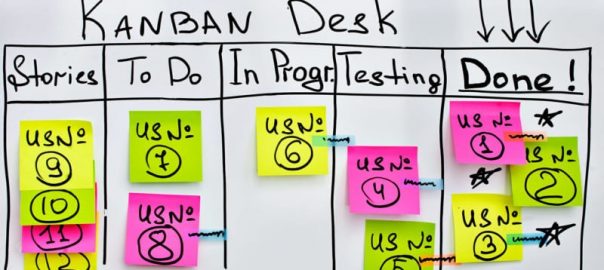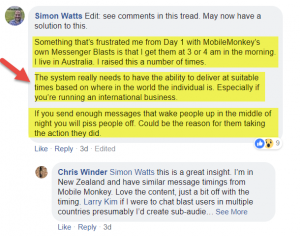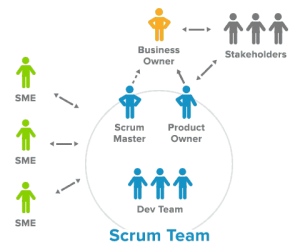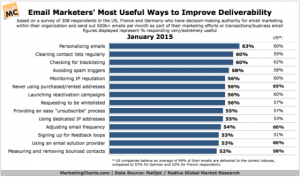There is a heightened need for marketing work management software, which documents and optimizes the processes, workflows and projects undertaken by digital marketers.
Marketing work management platforms help marketing leaders and their teams structure their day-to-day work to meet their goals on deadline and within budget constraints, all while managing resources and facilitating communication and collaboration. Functions may include task assignments, time tracking, budgeting, team communication and file sharing, among others.
Before the pandemic, many marketers had already been accustomed to working on initiatives that involved collaboration with people outside their own offices since many brands operate across regions or around the globe. Additionally, marketing projects — whether they’re campaigns or websites or whitepapers or videos — regularly involve working with outside resources, whether it’s an agency or a contract designer or photographer. The COVID pandemic brought all of that to a fever pitch, as projects needed to be completed by a workforce largely isolated in their home offices.
All of that has heightened the need for marketing work management software, which documents and optimizes the processes, workflows and projects undertaken by digital marketers, often integrating with other systems like digital asset management (DAM) or creative suites.
For various reasons, marketing is an ideal use case even for these tools. Speaking on an earnings call, Smartsheet chief product officer Gene Farrell explained why it has focused on attracting marketers by building a premium add-on and other features that accommodate “more advanced marketing workflows.“
“Marketing is one of those functions that really exists in almost every company in the industry and many times is a lighthouse or very visible part of how companies actually execute,” Farrell said. “It’s also an area where you’re typically collaborating across both internal and external stakeholders with agencies and other creative groups.”
Made for agile marketing
To keep up with the pace of change, many marketing organizations have adopted agile marketing, a philosophy and workflow pioneered by software developers. Though it’s been around for a while now, the pivot to agile marketing workflows appears to be accelerating. In the latest edition of the State of Agile Marketing report by AgileSherpas and Aprimo, 42% of marketers surveyed said they were using agile, up from 32% in 2019. The teams using agile were more likely to report that they could handle fast-paced work and were able to take on emerging opportunities, as compared to those using other methodologies.
The practice of agile marketing doesn’t require any particular software, but marketers adopting this methodology are likely looking for tools that mesh with their new philosophy. Many marketing work management vendors offer reports and interfaces geared for agile, such as Kanban boards and a place to input backlog items. Most also enable more traditional Gantt charts.
Benefits and capabilities of marketing work management tools
Digital marketing – involving everything from search engines to social media to display ads to email to mobile apps and more – is a complex endeavor, whether marketers are in-house at a brand or employed by an agency.
Enterprise marketing work management tools can offer significant benefits that help marketers get a handle on their work and better communicate with colleagues, including the following:
- More efficient management of global operations. Marketing work management tools can help distributed employees coordinate with each other, allowing for accountability and consistency across markets. Some tools specifically support collaboration and approval processes geared toward marketing collateral.
- Ease and transparency of reporting. Though it’s possible to use manually updated spreadsheets to manage projects, they don’t offer the native reports and dashboards offered by marketing work management tools. Most of these platforms offer highly customized reporting capabilities that are widget- and wizard-driven to make reporting
faster and easier. These reports are often easily shareable and can be exposed to executives at the VP- and C-levels, giving all stakeholders a view of progress across multiple initiatives. - Visualizations that aid in planning and resource allocation. Most marketing work management tools provide visualizations that allow marketers to see multiple projects at a glance, allowing them to adjust schedules or tasks as necessary to avoid overtaxing, or underutilizing, resources.
- Improved coordination with clients and other stakeholders. Many tools allow “guest” access or other flexible permission structures that allow for the sharing of some information while other aspects are hidden. This is especially helpful for marketers working at agencies or as outside consultants, because they can document what they need to within the tool, without being concerned about appearing less than professional when the client logs in
and sees their own view. - Digital asset management and file sharing. Most marketing work management tools allow users to upload files or link to them in cloud storage, serving as something of a DAM “lite”. Some are even integrated with a full-fledged DAM or creative suite, allowing creatives developing marketing assets to do their work, obtain reviews and approvals, while also tracking the status of the work for other stakeholders.
- More seamless communication with development team and other groups. Digital marketing initiatives often include a technological aspect that calls for the talent of developers. When marketers and developers are in different functional departments, but utilize the same marketing work management tool, their work together runs with fewer hitches. The same applies to any other department with which marketing interfaces.
- Easier tracking of billable hours and human resource management. Many tools track the time that has elapsed while an assignee works on a task, allowing agency account managers to easily tally up the number of hours spent on a particular client’s projects. This feature can also help managers keep an eye on employee productivity levels.
- Clear accountability that keeps tasks from slipping through the cracks. The heart of most marketing work management tools is some version of a to-do list where discrete tasks can be assigned to the person or group that is responsible for accomplishing it. By using dependencies functionality and tracking these tasks, managers can eliminate hold-ups and miscommunication about what is expected.
- Automation of repetitive tasks. Many tools allow for the creation of templates or reproducible sets of tasks that can help avoid tedious repetition. If an agency has an onboarding process, or a regular check-up process, that it follows with each one of its clients, a manager can create the structure for that process once and re-use it every time
the use case arises. Additionally, some tools include recurring tasks that can be used to document processes that occur at regular intervals.
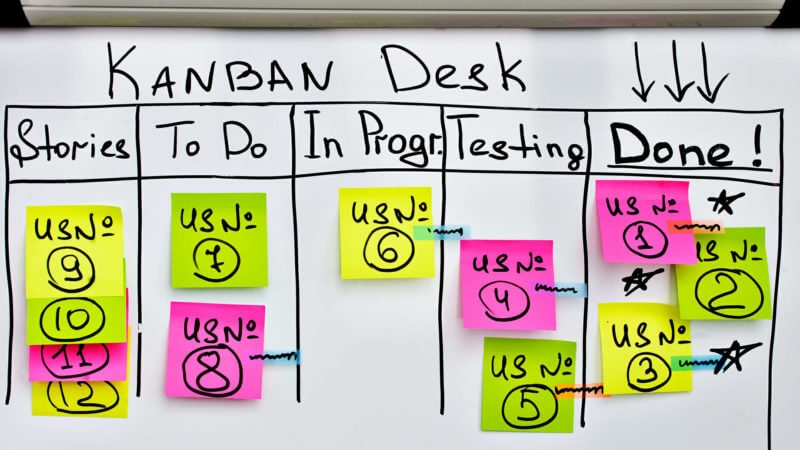
Explore capabilities from vendors like Adobe Workfront, Wrike, Airtable, Smartsheet and more in the full MarTech Intelligence Report on marketing work management platforms.
Do you need an enterprise marketing work management platform?
Deciding whether your company needs an enterprise marketing work management platform calls for the same evaluative steps involved in any software adoption, including a comprehensive self-assessment of your organization’s business needs and resources, staffing, management support, and financial resources.
Use the following questions as a guideline to determine the answers.
- Does the tool fit with our current processes or would we need to change them? In some cases, it might be worth changing your workflow to take advantage of a tool, but,in others, the need for that change may create more problems than it solves. Ideally, you want to find a tool that can be easily adapted to the way your employees are accustomed to getting tasks accomplished. Doing this will also enable staffers to learn the tool more quickly, as their familiarity with the process will make the tool more intuitive.
- How do our employees manage their own productivity? The people fulfilling the functions within an organization will typically have their own ways of working to achieve their objectives. Some may use the Pomodoro method to maximize productivity, while others might subscribe to the GTD (Getting Things Done) philosophy. Knowing how your employees work best will help you determine the best tool to adopt.
- Do we have C-level buy-in? Marketing work management tools can serve as the foundation of an enterprise’s activities, and some objectives – cross-departmental coordination, for example – are more easily reached if a tool has executive support and is adopted companywide.
- What systems must the marketing work management platform integrate with? Many companies have strong commitments to existing tools like an office suite (Google Workspace or Microsoft Office), a CRM or a creative editing platform. Which integrations are must-haves and which are nice-to-haves?
- Do we have the right technical resources? If you find a tool that works well for you but doesn’t have an out-of-the-box integration that you require, can you dedicate the development resources to creating a connection?
- Can we invest in staff training and educate outside stakeholders, as well? It is vital to train any employees who will be utilizing the platform, ensuring that they are educated on the tool itself as well as what is expected of them when they assign or are assigned a task. If you will be using the tool to engage with outside entities – clients, contractors and the like – you will also need to familiarize them with the platform.
- Have we established KPIs and put a system in place for tracking, measuring and reporting results? If you’re justifying the investment in a tool by how it achieves the desired results, ensure you have ways to compare the before and after so you know whether you are getting a good ROI. For example, are you experiencing fewer snags in producing deliverables? Do clients ask fewer questions about the status of a campaign because they’re able to obtain the information themselves through the tool?
- Do we have realistic expectations? Just licensing a marketing work management platform won’t instantly get your operations organized. It takes time to customize a tool for your needs, for employees to be trained and become familiar with the platform, and for projects to get off the ground.
The post What is marketing work management and how do these platforms support agile marketing? appeared first on MarTech.
(40)
